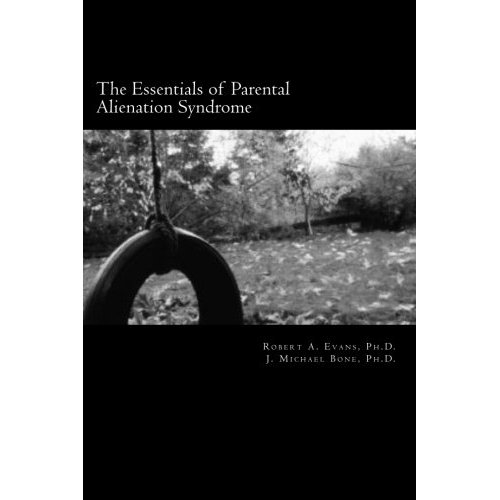We have saved the least controversy for the last. Having said that, there are other issues surrounding Parental Alienation but it is not the intent of this blog series to be exhaustive of all them.
This one, however, is interesting because it is frequently raised by professionals who really should know better.
There are some who claim that there is no such thing as Parental Alienation (PA).
The argument given to justify this assertion is that PA is not in appear in DSM-IV. To say that PA does not exist because it is not listed in DSM-IV clearly indicates an ignorance about the DSM or its history. In 1980 Autoimmune Deficiency Syndrome (AIDS) did not exist because it was not then listed in medical textbooks.
 The DSM uses committees to meet, present and review pertinent literature regarding diagnostic entities. Sometimes this process takes a considerable length of time, many years. For example, Gille de La Tourette first described his syndrome, later to become a disorder, in 1885. It was not until 95 years later, that the disorder was finally listed in the DSM. Another example was Asperger who first described his syndrome in 1957. In 1994, 37 years later, it was accepted into DSM-IV. Like Tourettes, Asperger’s Syndrome also became Asperger’s Disorder. While these may seem a little odd because of the rarity of the disorders, a more recent example is PTSD, reference to this was made earlier. PTSD “did not exist” until relatively recently.
The DSM uses committees to meet, present and review pertinent literature regarding diagnostic entities. Sometimes this process takes a considerable length of time, many years. For example, Gille de La Tourette first described his syndrome, later to become a disorder, in 1885. It was not until 95 years later, that the disorder was finally listed in the DSM. Another example was Asperger who first described his syndrome in 1957. In 1994, 37 years later, it was accepted into DSM-IV. Like Tourettes, Asperger’s Syndrome also became Asperger’s Disorder. While these may seem a little odd because of the rarity of the disorders, a more recent example is PTSD, reference to this was made earlier. PTSD “did not exist” until relatively recently.
If you think it took a long time for Tourettes to get into the DSM, consider PTSD. It was first described in 1900 BC by an Egyptian physician who stated it was a “hysterical” reaction to trauma. Now, was this guy a little ahead of the curve or what? Later it was described as “railway spine”, a nineteenth-century diagnosis for PTSD symptoms of survivors of railroad accidents. Its description was published in 1864. They thought the symptoms were due to the excessive speeds of trains in their day which was about 30 miles an hour and the human body could not deal with such speeds. The military, since the Civil War, have recorded PTSD symptoms of veterans who suffered emotional problems and were diagnosed with “soldier’s heart”. The term “shell shock” came into existence during World War I and then in WWII it became “combat fatigue, war neurosis and operational exhaustion”. It was not until 1980 that PTSD made its way into the DSM-III. It was said that the development of PTSD, in part, had a socio-economic and political implication. While the military for a long time recognized this disorder the victims did not receive economic compensation because there was no psychiatric diagnosis; it didn’t exist. It was not until after the Vietnam War did this situation changed. So the argument that PA does not exist because it is not in the DSM is not very persuasive.
PA was first publicized in 1985 and the current edition of the DSM-IV was published in 1994. There was only six years from its inception to the time the DSM committees were meeting from 1991 to 1993. There simply was not enough published research on PA for the committees to consider even if it was submitted for consideration. This, of course, is no longer the case.
To say that the DSM includes only those disorders that have been subjected to extensive research and peer review is a little misleading. The process is pedantic but it is not infallible.


